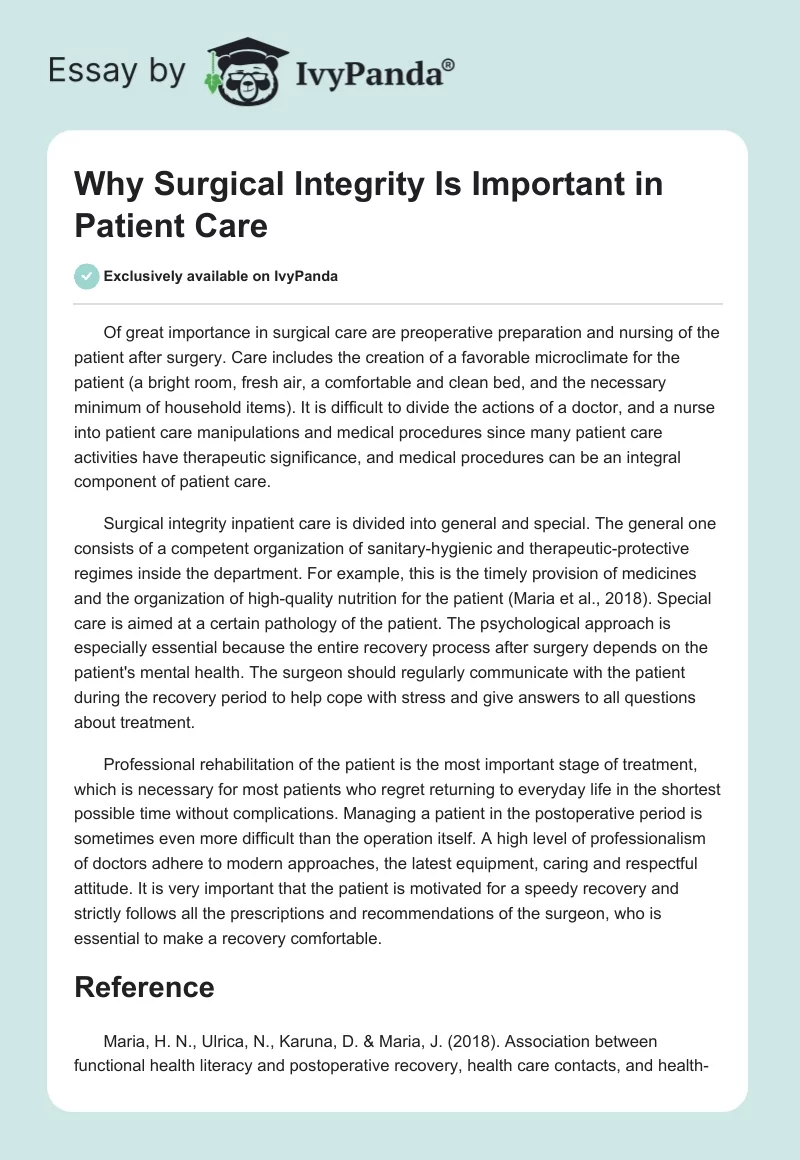Of great importance in surgical care are preoperative preparation and nursing of the patient after surgery. Care includes the creation of a favorable microclimate for the patient (a bright room, fresh air, a comfortable and clean bed, and the necessary minimum of household items). It is difficult to divide the actions of a doctor, and a nurse into patient care manipulations and medical procedures since many patient care activities have therapeutic significance, and medical procedures can be an integral component of patient care.
Surgical integrity inpatient care is divided into general and special. The general one consists of a competent organization of sanitary-hygienic and therapeutic-protective regimes inside the department. For example, this is the timely provision of medicines and the organization of high-quality nutrition for the patient (Maria et al., 2018). Special care is aimed at a certain pathology of the patient. The psychological approach is especially essential because the entire recovery process after surgery depends on the patient’s mental health. The surgeon should regularly communicate with the patient during the recovery period to help cope with stress and give answers to all questions about treatment.
Professional rehabilitation of the patient is the most important stage of treatment, which is necessary for most patients who regret returning to everyday life in the shortest possible time without complications. Managing a patient in the postoperative period is sometimes even more difficult than the operation itself. A high level of professionalism of doctors adhere to modern approaches, the latest equipment, caring and respectful attitude. It is very important that the patient is motivated for a speedy recovery and strictly follows all the prescriptions and recommendations of the surgeon, who is essential to make a recovery comfortable.
Reference
Maria, H. N., Ulrica, N., Karuna, D. & Maria, J. (2018). Association between functional health literacy and postoperative recovery, health care contacts, and health-related quality of life among patients undergoing day surgery: secondary analysis of a randomized clinical trial. JAMA surgery, 153(8), 738-745.


